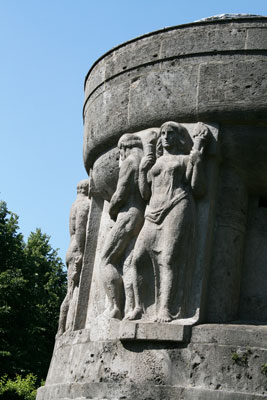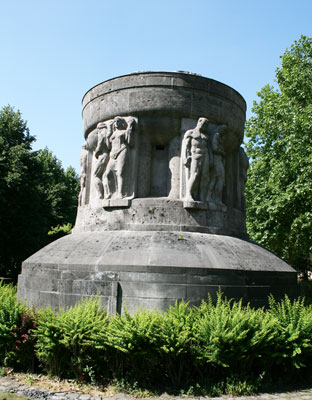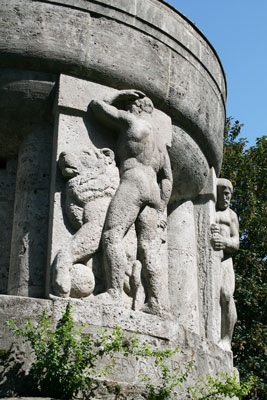War memorial on the promenade

Many war memorials after the Wars of Unification in 1864, 1866 and 1870/71 (German-French War) depict more the war participants (also the survivors) than the dead soldiers. After the empire founding and the won German-French War, the memorials, dedicated to the soldiers, often describe them as 'victorious heroes'. Towns, who had sent their war participants, commemorated their veterans and dead often with memorials on central public places, for example, at the town hall, schoolhouse, on the market place, in the park and so on. The monuments were donated by the war associations and the communities.

According to the then national self-image, such memorials often depict Victoria, Germania, or eagles with outstretched wings, the obelisk is also often seen as an age-old victory sign. Pure dead-memorials often have exaggerated decorative sarcophagus or urn depictions, which would be fit for a state funeral but have nothing to so with the burial situation. The depiction of military figures was rather more rare on the monuments from 1870/71.

A law from 1890, suited the installation of memorials as it gave the responsibility of memorial installations to the communities. From then on, numerous new cenotaphs were put up for 1870/71, especially about the anniversaries of the victory over France, like the 25th in 1896 or the 40th in 1911. The industrialisation meant that many communities became rich, the veterans were getting old now and just often set themselves a monument. At the same time, many of the memorials, built after 1900 for 1870/71 are also a sign of the militarisation, which the society experienced under Emperor Wilhelm II.

